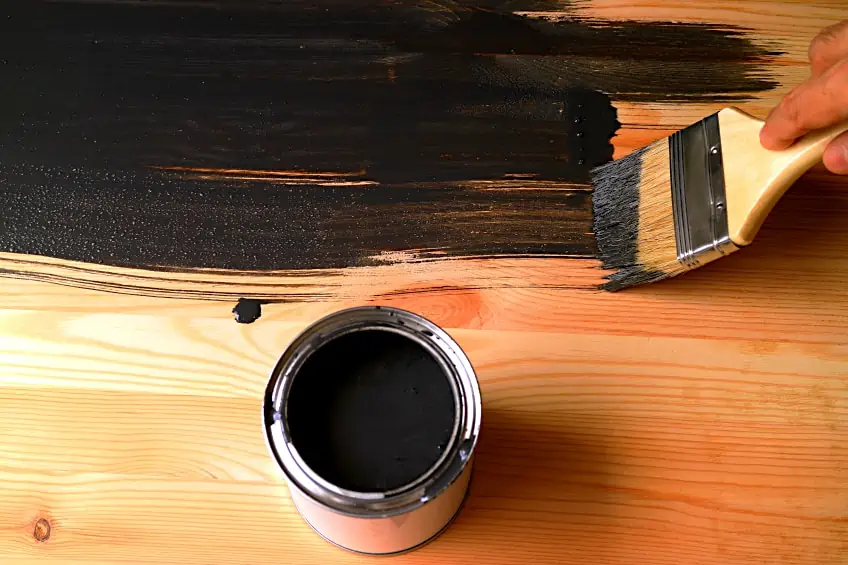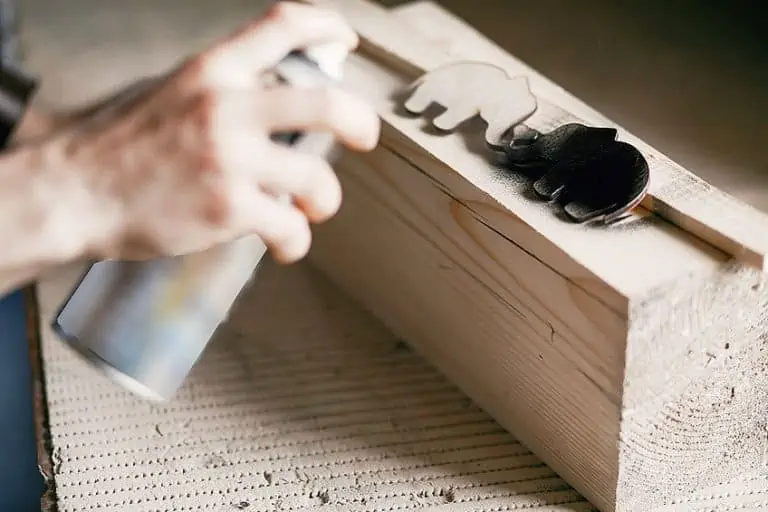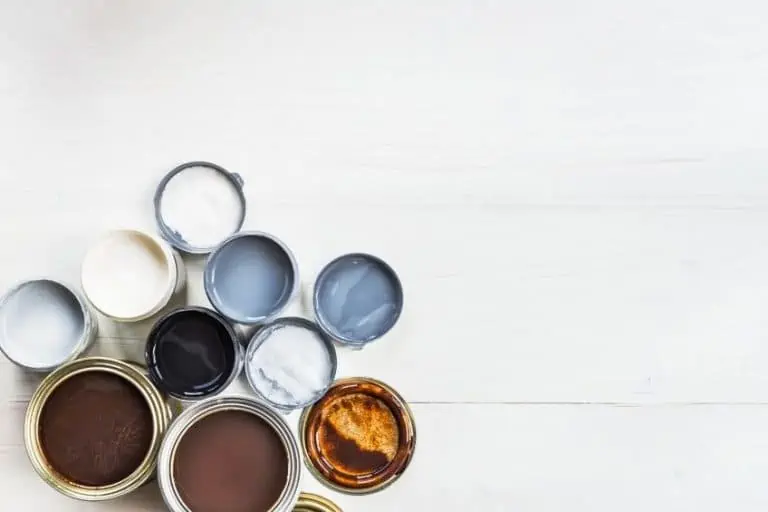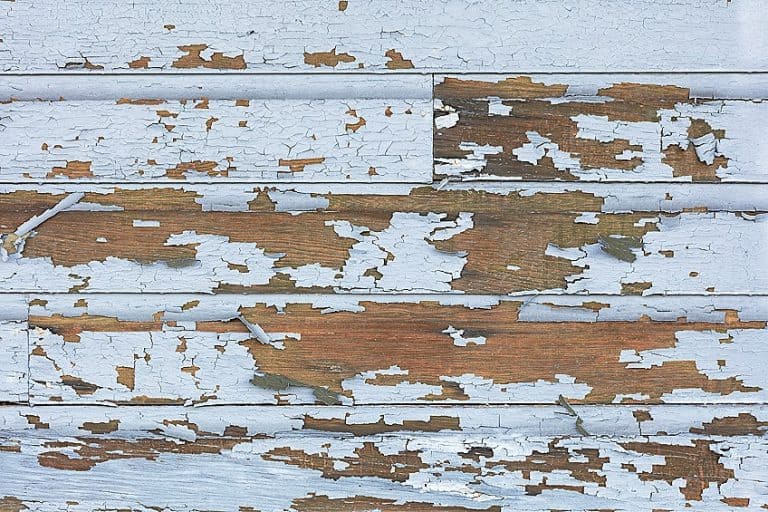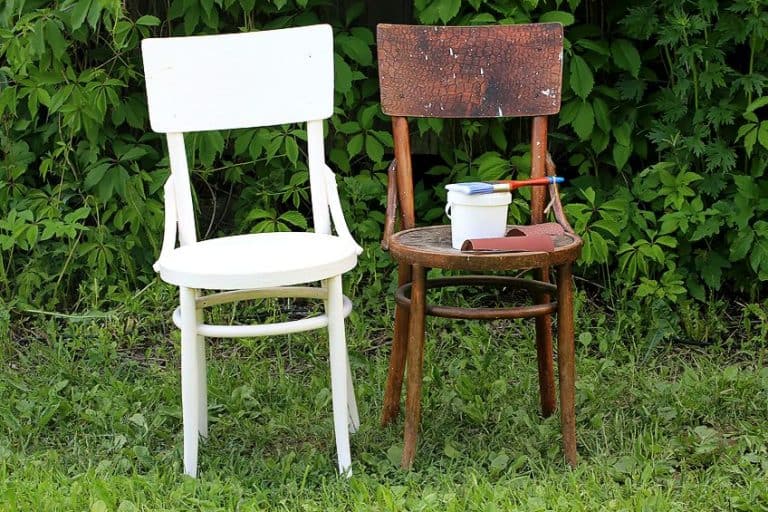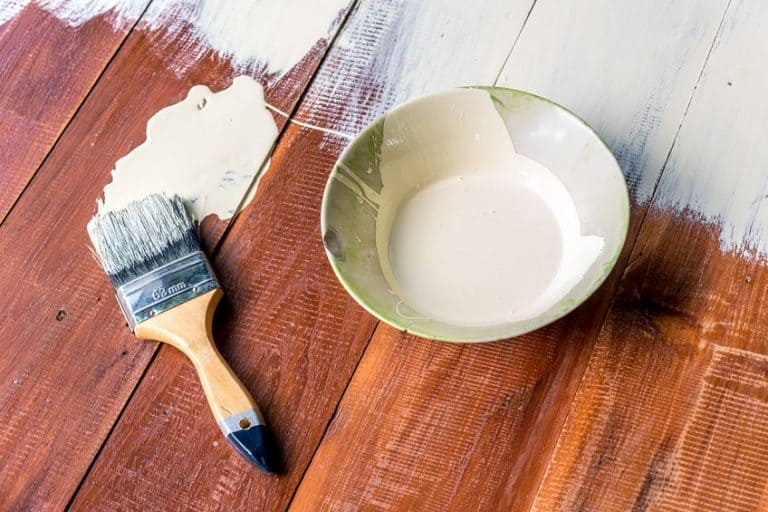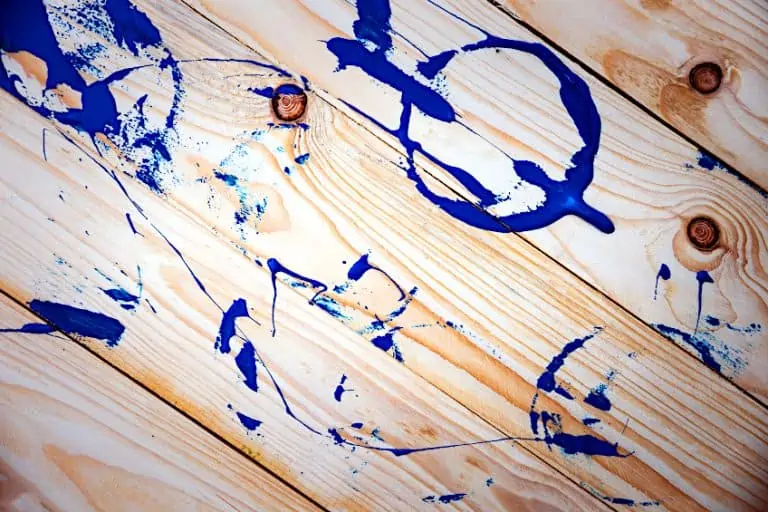How to Stain Wood Darker – A Guide to Achieving a Deeper Tone
If you’ve ever found yourself looking at some wood board and wishing it was darker, we understand your pain. Thankfully there is a whole host of quick and effective solutions to this problem, the most popular being wood stain. Wood stain has been around for nearly 100 years, with companies like Pratt and Lambert producing some of the first commercially available wood stain all the way back in the 1920s! There are a few methods you can use to make your wood darker, so let’s have a look at how to stain wood darker, and why staining your wood is a good idea overall.
Table of Contents
- 1 What Are the Benefits of Staining Wood?
- 2 How to Stain Wood Darker
- 3 Which Stain Is Best for Darkening Wood?
- 4 Frequently Asked Questions
What Are the Benefits of Staining Wood?
Before we get into how to stain wood darker, we thought it would be a good idea to show you just how beneficial it can be to stain your wood board. Wood is a porous material, which basically means that there are loads of tiny holes in the surface and interior that are capable of absorbing liquids, and they can make a cozy home for bugs and mold.
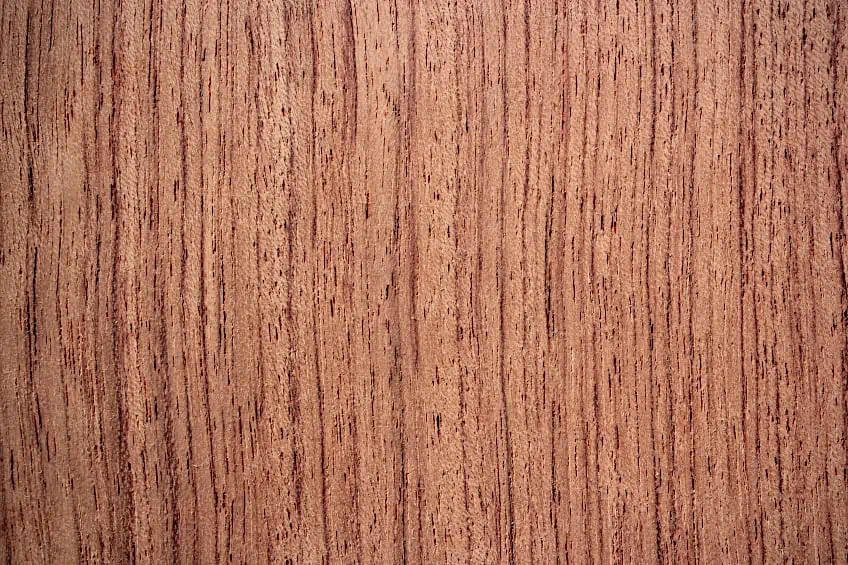
Applying wood stain to the surface of a wooden board allows you to exploit these little holes in an effort to both protect and improve the look of your wood. Wood stain is a wood treatment that seeps into these pours, bonding with the little wood fibers and clogging up some of these pores.
The stain then darkens the color of the wood, while creating a pseudo seal on the surface of the board.
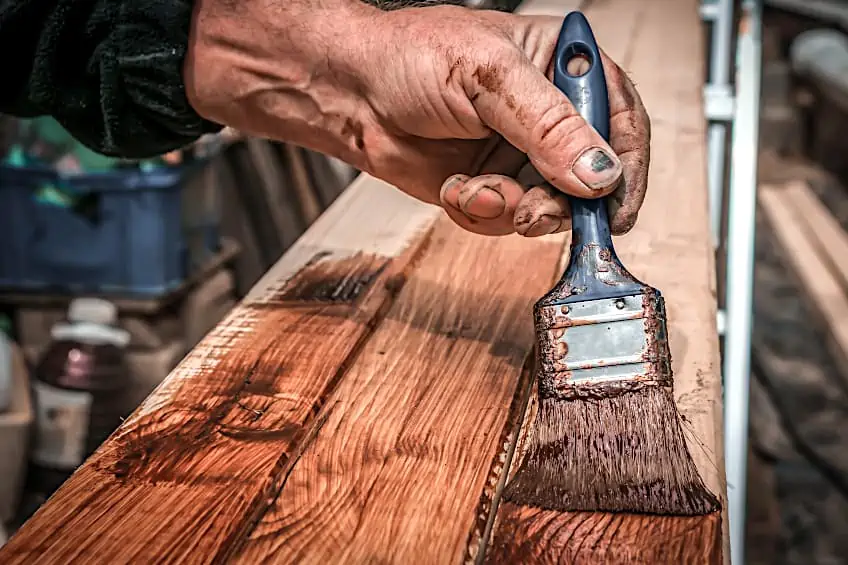
This is effectively killing two birds with one stone.
Not only will you get a deeper, richer color palette by applying wood stain to your board, but it will grant the wood a degree of protection from external forces. This is ideal if your workpiece will be situated outdoors, as things like impact, abrasion, moisture, insects, mold, sunlight, and UV damage are all elements that could damage your workpiece.
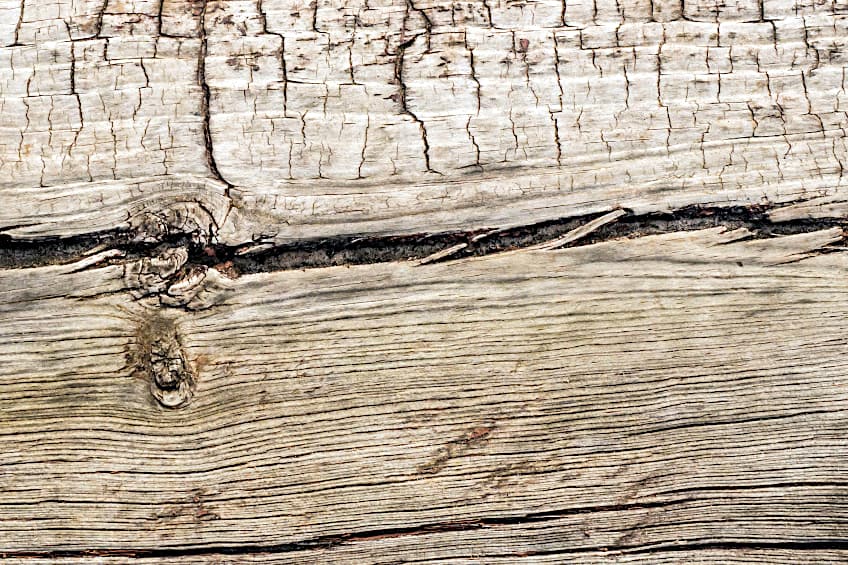
Protection and a darker color aren’t the only benefits of using wood stain though. Loads of crafters and DIY enthusiasts prefer using wood stain instead of paint because it allows you to improve the aesthetic of your workpiece without hiding the grain of the wood.
This is ideal if you prefer the look of the exposed grain, or if you’ve purchased a particularly expensive wood board and want to show it off.
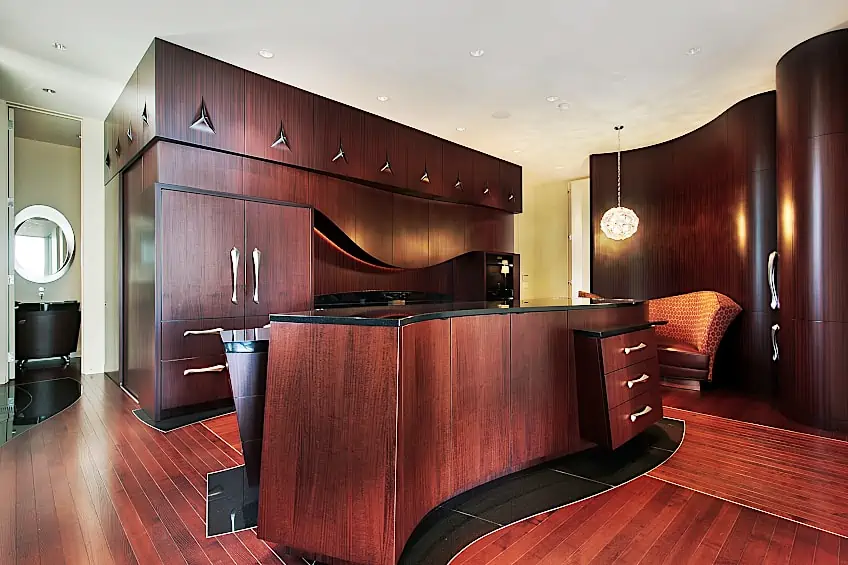
Even though wood stain might not always be the best option, it offers loads of benefits that surface coatings like paint and epoxy resin simply do not.
However, wood stain does have its downsides.
Wood stain contains loads of VOCs (volatile organic compounds), tends to be hard to get rid of, and cannot be applied indoors unless the area in question is well-ventilated.
How to Stain Wood Darker
Wondering how to stain wood darker? As we mentioned previously, there are loads of ways to go about darkening wood. Even though all of them involve the use of wood stain in one form or another, you’d be surprised at the variety of results that can be achieved simply by altering your technique and method of application. This being said, let’s have a look at a few ways you can go about darkening wood.
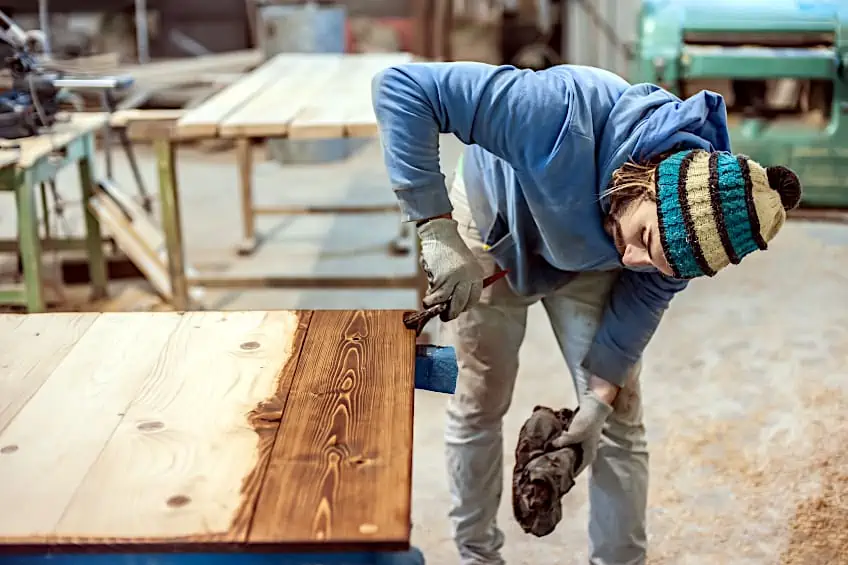
Create a Coarser Surface
If you’re asking yourself how sanding your workpiece will allow you to stain it darker, you’re probably not alone. The reasoning behind it is actually quite simple; the coarser the surface of the wood board, the easier the wood stain can adhere and absorb into the wood’s surface.
More stain absorption over a greater surface area will result in a darker stain color.
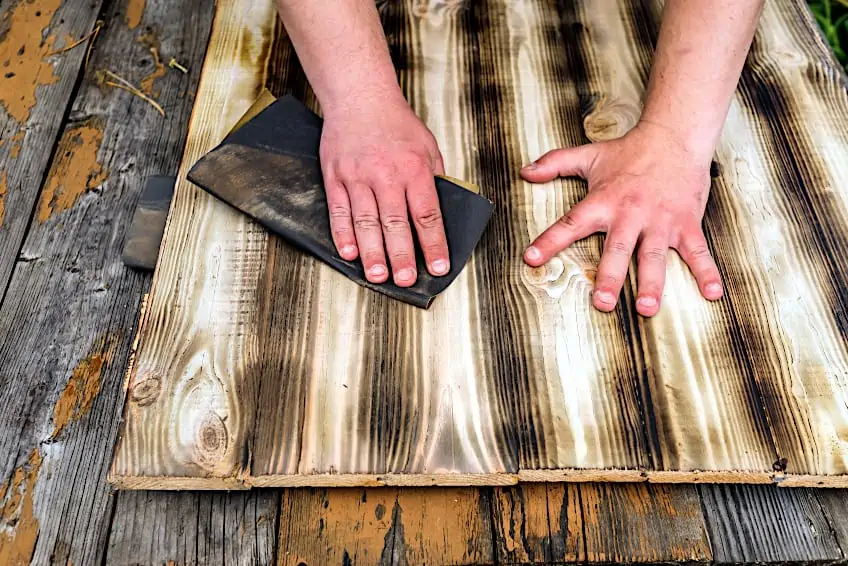
How to Make Your Surface Coarse
If you’re wondering how to go about this, it’s actually pretty straightforward. Using coarse sandpaper, rough up the surface of your wood board by sanding in the direction of the wood grain. This process will expose fresh wood grain, and because you’re using a coarse sandpaper/sanding block, it will gouge deeper into the wood fibers which ensures a darker stain.
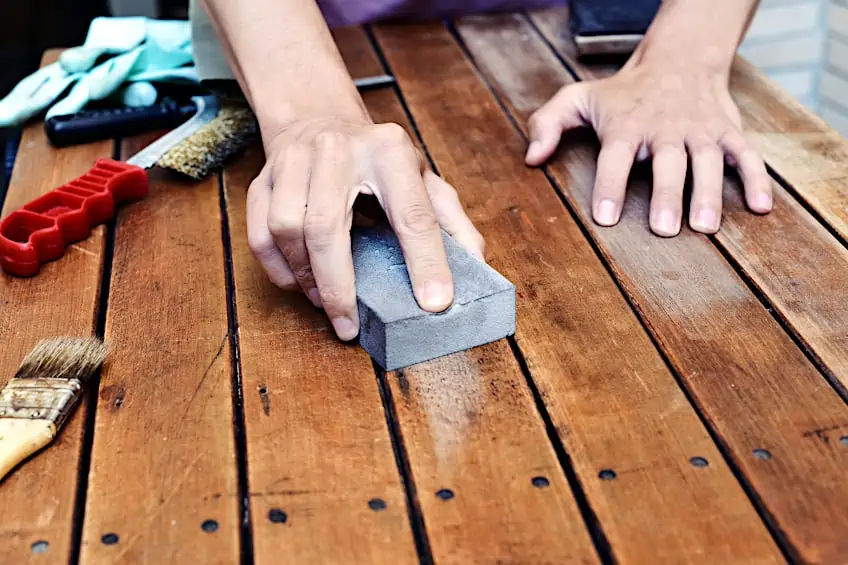
Which grit of sandpaper should you use for this process? You should be able to get away with sandpaper between 120 grit and 150 grit. Keep in mind that using sandpaper that is this coarse creates the possibility of you creating nasty-looking lines across the surface of your workpiece. If you would like to avoid this, it’s best to work carefully.
The trick is to follow the grain of the wood and to sand with consistent pressure, ensuring that each stroke is even and deliberate. You might notice little scratches despite your best efforts, but as long as they follow the direction of the wood’s grain there shouldn’t be anything to worry about. If all else fails and time is of the essence, try out an orbital sander.
Use Water to Raise Your Wood Grain
If you have any experience working with wood, then you know that it’s a decidedly bad idea to get it wet. Why? Well, excessive exposure to water will cause wood to swell up, crack, and eventually rot away. However, with certain wood species, exposing the surface of the board to enough water will gently raise the grain of the wood.
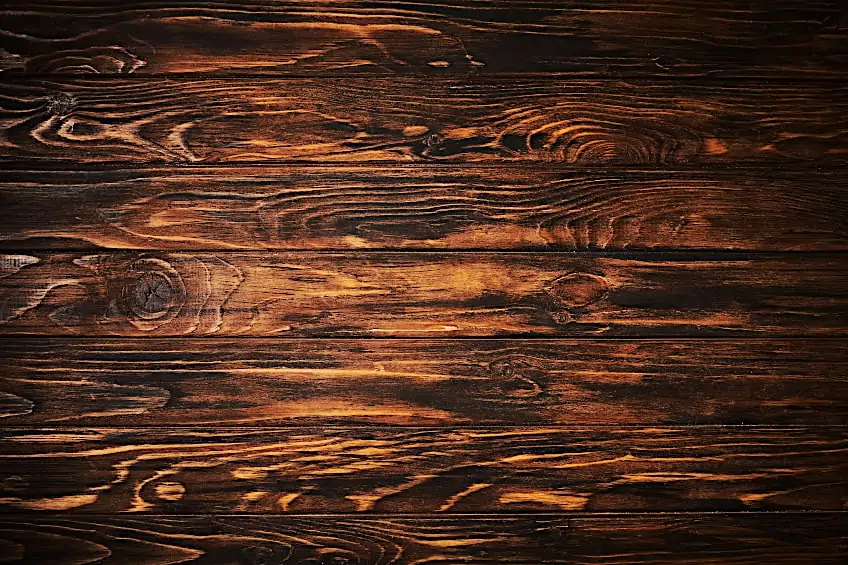
How does this help make your wood board darker, you ask?
Untreated wood surfaces have their grain exposed, but even this layer has likely been conditioned through exposure. Adding some water to the surface of the board will ensure that the grain rises, opening up the pores of the wood and allowing the stain to seep in unobstructed.
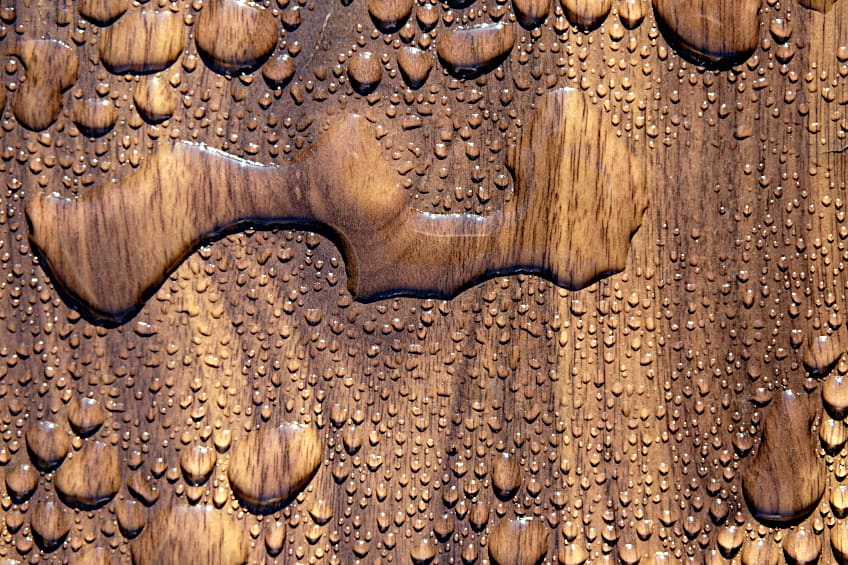
How to Raise Your Wood Grain Using Water
Using a spray bottle, wet the surface of your wood. Once the water has been applied to the surface of your wood board you should find that the surface has a raised, rough, and surprisingly dry texture to it. You might even be able to see the gaps between the grain depending on the type of wood you have chosen to use.
This is exactly what you want before you begin staining your wood.
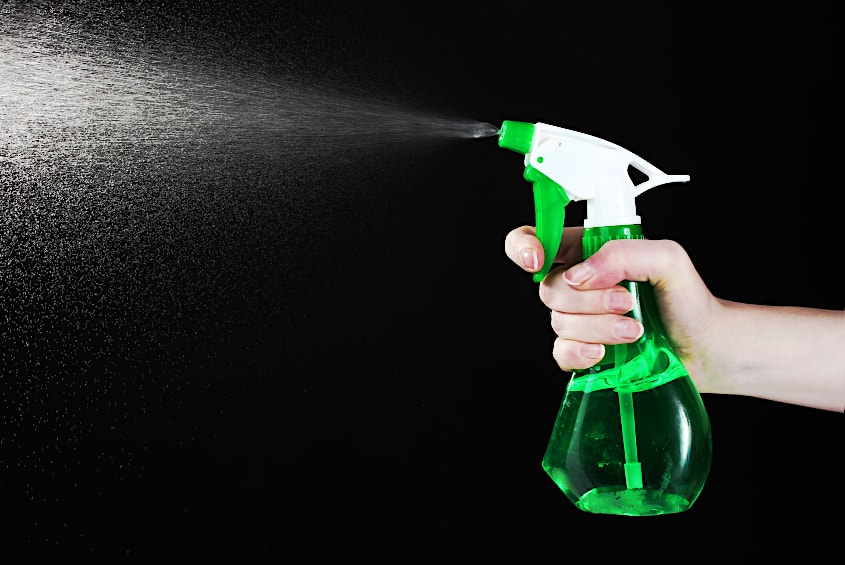
If you’re a bit pressed for time but feel like this method works for you, why not try out a water-based stain?
Using a water-based stain will simultaneously raise the grain of your wood and stain it. The trick is to apply an initial coat using a clean cloth, allow it to dry, and then apply a second coat to seal in the color and make it look a bit more pronounced.
Use Additional Pigment in Your Stain
If you’re wondering how to make wood stain darker, this is the best way to go about it. Before we get into how to make wood stain darker it’s important for you to understand the fundamental composition of wood stain. Wood stain consists of the vehicle (binder and solvents) and the pigment (the coloring agent), which allow the substance to stain wood fibers.
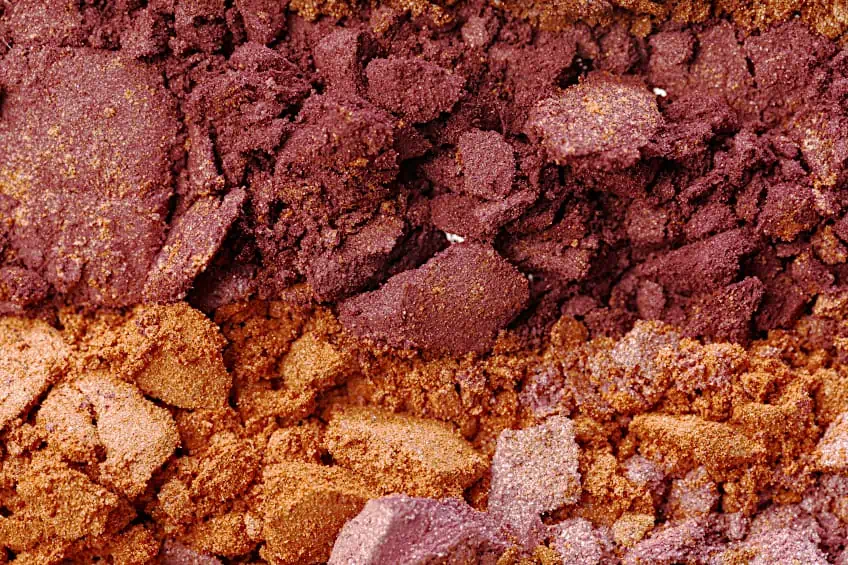
Different types of wood stain contain different ratios of binder to pigment, which can vary according to brand and quality. The trick to making your wood stain lighter is to alter the ratio of binder to pigment by adding more pigment to the mixture.
This might sound complicated, but in reality, it’s literally just adding more color to your wood stain to make the pigment more pronounced.
How to Add Pigment to Your Stain
How do you go about this you ask? All that you need to do is get your hands on some colorant for wood stain. This can be found at most hardware stores, lumber yards, and even online if you don’t have the time to run out and get some. There isn’t an exact science to adding color to your stain by hand, so this is more of a “trial and error” exercise.
You can also alter the color of wood by using a range of household products.
Get your hands on a spare piece of wood and test your stain out before attempting it on your actual workpiece. Pour some stain out into a container, add some colorant, mix the two together, and apply it to your wood. If your stain is too light or too dark, keep playing around with the ratios until you have your desired color. Once you’re happy with the color, make a note of it and apply it to your workpiece.
Use the Dirty Wipe Technique
Usually, when applying stain to a wooden surface you want to wipe away any excess stain to ensure that you get a nice even coating. However, if you’d like your stain to be noticeably darker you could use a staining technique known as the “dirty wipe” which essentially involves not wiping away the excess stain, but instead allowing it to set in.
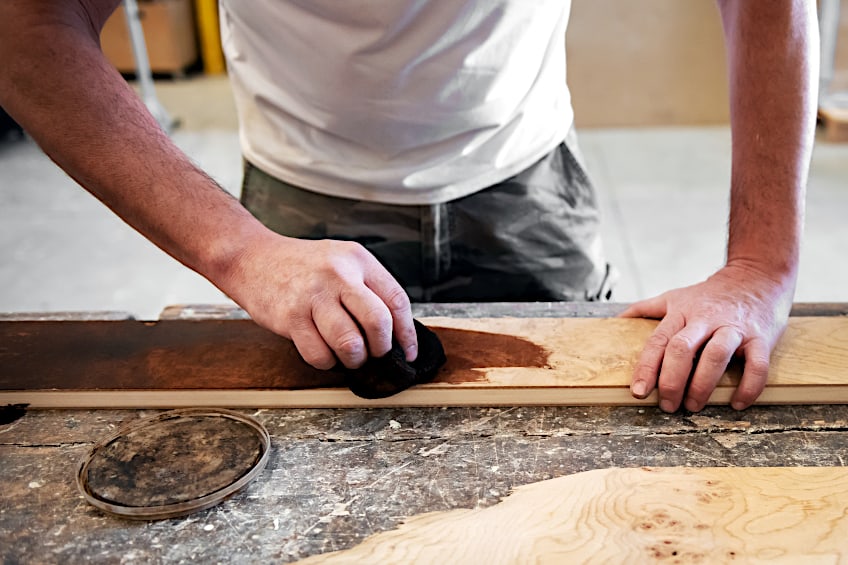
Now, if you’ve worked with stain before, you’re probably thinking that this will only result in a blotchy stain job. This is entirely correct, but if you go about, it the right way, you should be able to apply your wood stain without removing the excess and still have an even finish. The trick is to use the right amount of wood stain. Using too little stain will result in a weak final color and using too much will result in the surface of your board having a blotchy finish.
Using a piece of spare wood board, experiment with the amount of stain needed to achieve the perfect finish.
You can either apply the stain directly to the surface of your workpiece, or you can get some on a cloth and then rub it into your workpiece. Either way, you want to get just the right amount of stain on the surface to execute your dirty wipe correctly. Keep in mind that the more you practice this technique the better you’ll become at it!
Use a Glaze Following Your Wood Stain
When most of us think of wood stain we tend to think of water-based and oil-based wood stain almost exclusively. However, there are other substances that you can use to darken the color of your wood’s surface if you don’t want to use water-based or oil-based stain. Gel-based stain and wood glaze are great alternatives that provide consistently great results!
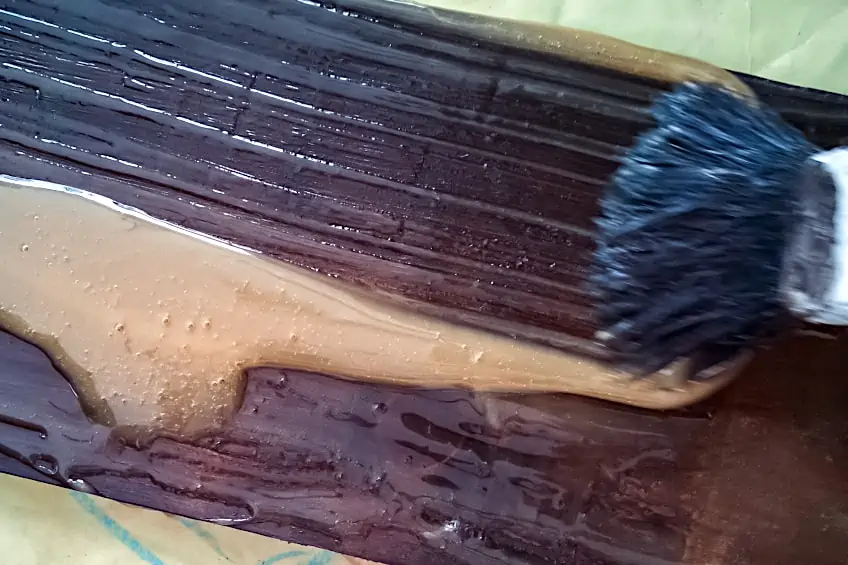
These types of stain tend to have a high pigment count which means that they tend to make wood darker with considerably less effort compared to oil and water-based stain options. What’s more is that you don’t have to wait for them to absorb into the wood’s surface.
Instead, they provide the surface of the wood with a type of “chemical burn” that darkens it.
How to Use Glaze and/or a Gel-Based Wood Stain
If you’re thinking about using a glaze, you can actually use it in conjunction with conventional oil and water-based stains. Since glaze is essentially just wood stain with a higher pigment ratio than conventional stain, all that you need to do is wait for your stain to dry and then apply your glaze on top of the stained surface with a clean cloth.
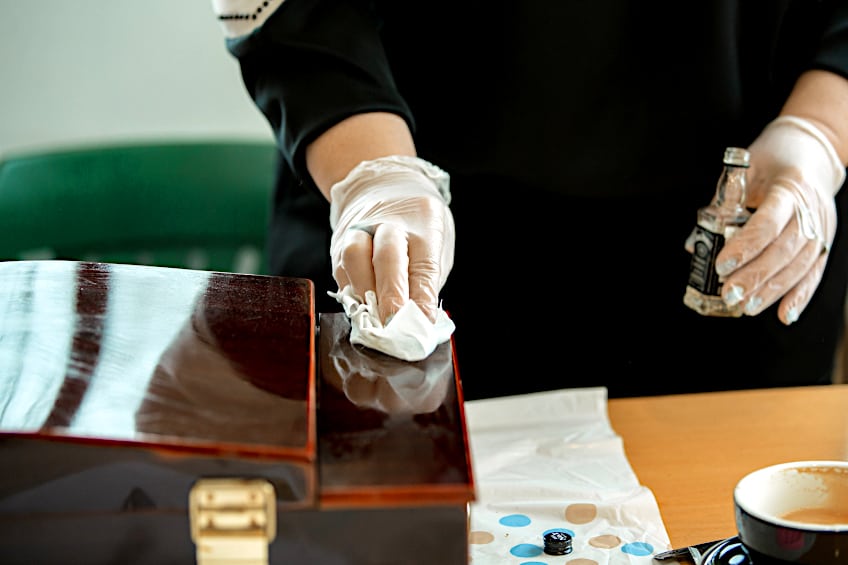
Be sure to use the same type of glaze as your stain. For example, if you are using a water-based wood stain be sure to use a water-based glaze. It should go without saying, but also ensure that you use a similar color to the wood stain you applied initially. Once your glaze has been on the workpiece for the recommended time, remove the excess with a clean cloth.
If you want to skip using glaze entirely, you can use a gel-based stain instead.
These are functionally the same as glaze, and they have a really high pigment-to-vehicle ratio. Simply apply the gel stain to the surface of your workpiece, allow it to sit for the manufacturer’s recommended time period, and remove the excess. Gel stain tends to provide a really dark, rich color.
Using a Wood Dye
When trying to stain light wood dark there are loads of options available to you. Your first instinct might be to use a wood stain, but you should consider all of your options, especially if your workpiece is particularly important. One option that most people overlook when trying to stain light wood dark is wood dye. What is wood dye, you ask?
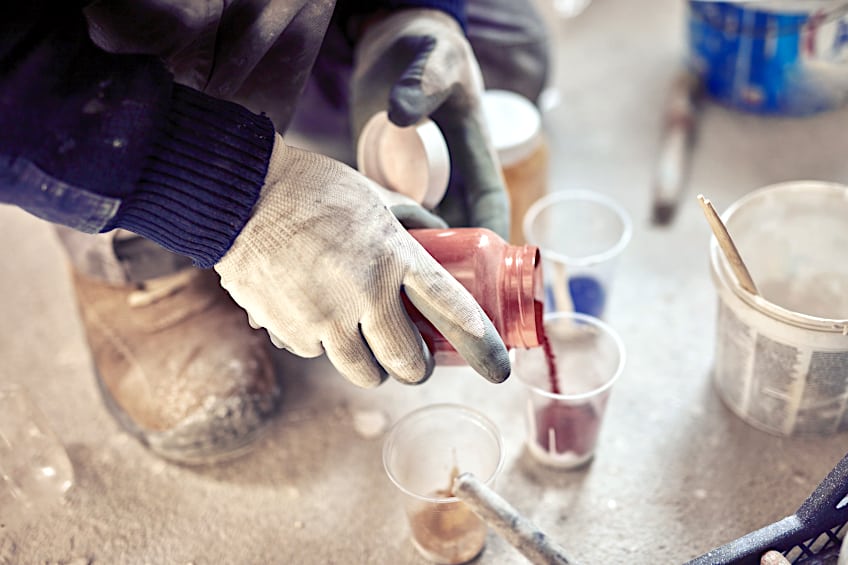
Wood dye is a pre-made, readily available dye that has been designed specifically for use with wooden surfaces. These dyes tend to be relatively inexpensive, are easy to use, and can be used on virtually any wooden surface, regardless of their density and/or porosity.
Wood dyes can typically be mixed with both water and alcohol, but there are examples that may only work with one of the aforementioned.
These types of wood dyes are commonly referred to as TransTint, and in other circles, they’re known as NGR (non-grain-raising) dyes. As both of these names suggest, they allow you to provide a wooden surface with a darker tint while not raising the grain. If you don’t have an awful lot of space or time to darken a large number of workpieces, you might want to give wood dyes a go.
How to Use Wood Dye
Wood dyes are applied pretty much exactly the same way that wood stain is. All that you need to do is ensure that your surface has been sanded and cleaned beforehand. Once your surface is ready, apply the dye either by use of a clean cloth or a paintbrush. Once the dye has been applied and allowed to set in, simply wipe away the excess.
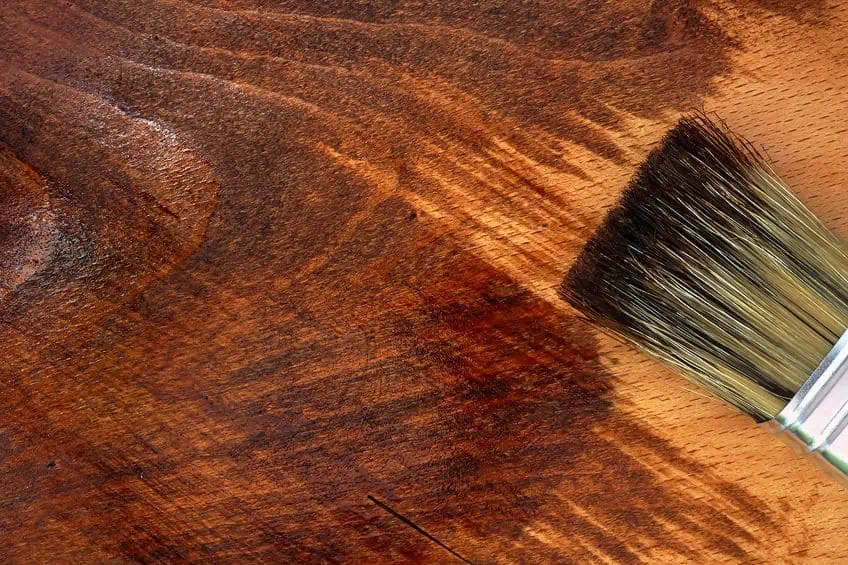
Wood dyes are sold in liquid and powdered forms, the latter of which simply needs to be mixed with either water or alcohol according to the manufacturer’s instructions. These dyes are typically used to stain furniture darker, as they work quickly and don’t let off any harmful VOCs in the process.
They also work excellently on denser wood species as they don’t rely on the porosity of the wood alone the get the job done.
This being said, if you’re trying to stain furniture darker or simply have a lot of workpieces to stain in a short period of time, this might be just what you’re looking for. Another convenient feature of this “staining” technique is that the dye’s potency can be altered simply by adding more colorant to the mixture, which allows you to play around with the darkness of your workpiece.
Using a Toner
Toner is a great way to darken the color of your wood even after a stain or wood dye has been applied to the surface. What is a wood toner you ask? Put simply, wood toner is a type of spray that can be lightly applied to the surface of a wooden workpiece to adjust the color. Toners are usually aerosolized, so all you need to do is give the surface of your workpiece a light spray to achieve a good result.
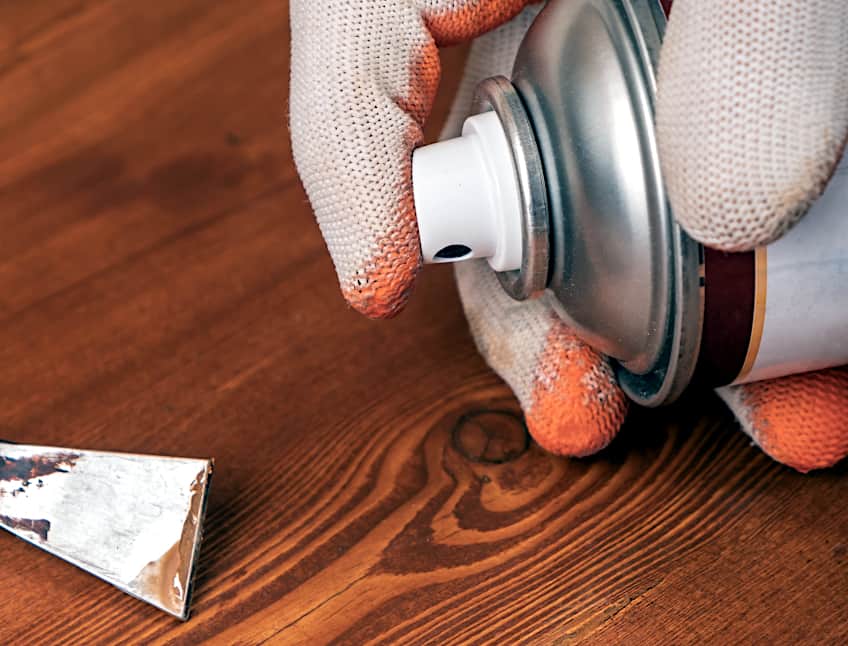
Toner works by lightly depositing little bits of pigments into the fibers of the wood. Although it can be used to make the surface of your workpiece darker, it can also be used to make an existing color a bit more evenly toned or fill in areas of the workpiece where the wood stain or dye might have been improperly applied.
How to Use Toner Spray
How do you use wood toning spray? Well, it depends on what you’re trying to do. If you have already applied your wood stain, simply apply some toner between your next coat to ensure an even and deep color. Remember to ensure that your initial coat has had an opportunity to dry for a bit before applying the toner.
Once the toner has been applied and dried, apply your next coat of stain.
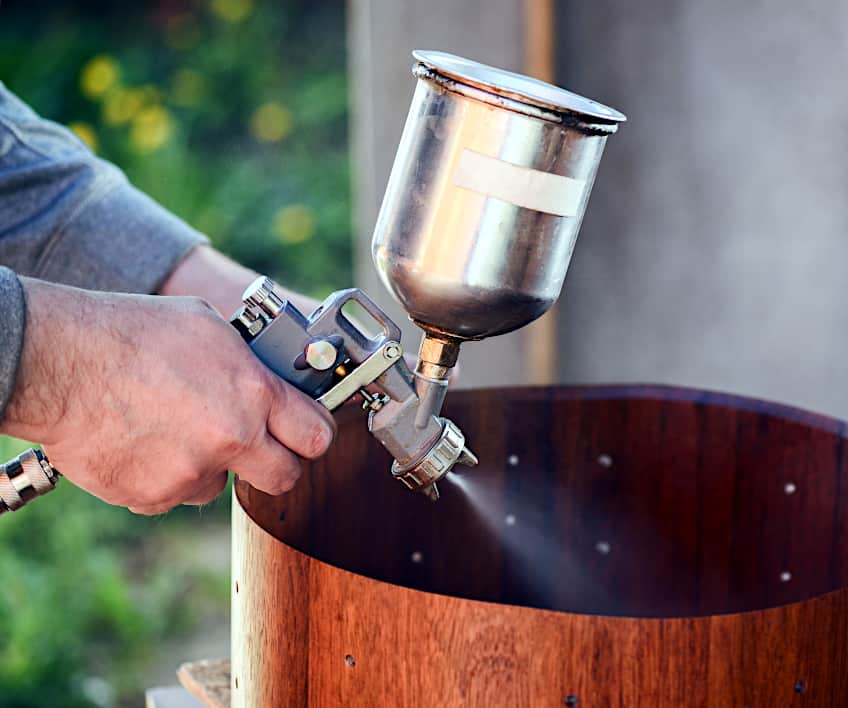
If you’re using toner to correct the color of stain that has already been applied, it can be a bit trickier. We recommend using a dye-based toner as it’s less likely to create patchy spots once it’s set in. Simply apply the toner to the surface of your workpiece and rub it in with a clean cloth.
Once the toner has been applied and set in, wipe off the excess with a clean cloth.
Which Stain Is Best for Darkening Wood?
Knowing how to darken wood stain is all well and good but knowing which type of stain is best suited for darkening wood can save loads of time, effort, and cash. While wood stain soaks into the pores of the wood and bonds with fibers, not all wood species are the same.
Some woods are denser than others, which can result in the wood rejecting the stain in certain areas.
This problem often presents itself as blotchy areas on the wood’s surface that you have to even out by using toner or dyes afterward. For this reason, when it comes to denser wood species, it’s best to avoid conventional stains like oil and water-based ones.
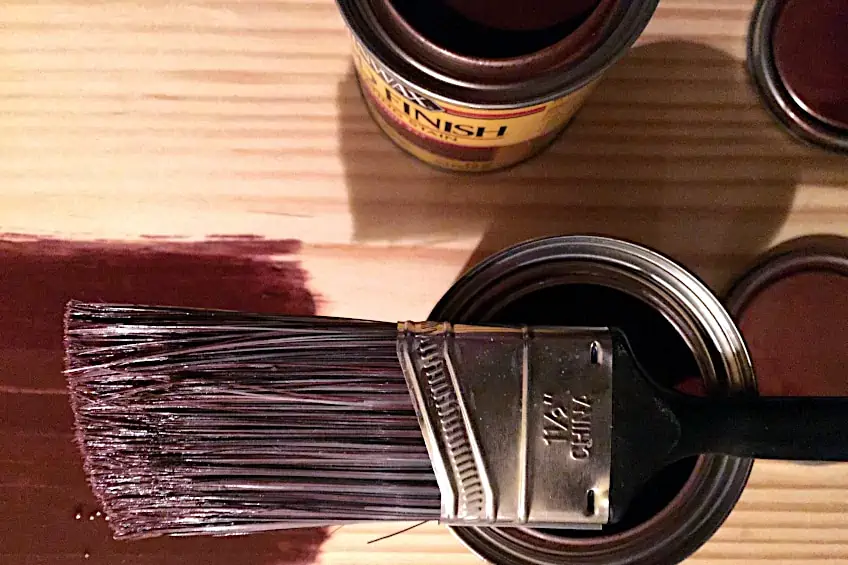
What should you use for dense wood species in that case? Well, you could use a toner or a wood dye, or you could simply prepare the wood using water and good sanding as we mentioned previously. Toner and wood dyes don’t rely on the porosity of the wood to add color, and the raising of the wood grain before sanding exposes wood fibers which are more likely to accept large amounts of wood stain. This being said, knowing what type of wood you are working with and familiarizing yourself with the products you have available to you (as well as how they work) will ensure that you get the best stain possible.
At the end of the day, which wood stain works best depends entirely on the application and how well you have prepared your wood to receive the stain.
Now that you know what wood stain is, how to darken wood stain, what options you have aside from conventional wood stain, and how to use them, it’s time for you to get out there and put your newfound knowledge to the test. Remember to familiarize yourself with wood treatment products and the type of wood you are working with to achieve the best results.
Frequently Asked Questions
Is Wood Stain Better Than Paint?
While paint can be considered a surface coating, wood stain is more of a wood treatment. Unlike paint, wood stain does not obscure the grain of the wood’s surface and provides both internal and external protection for your wooden workpiece.
What Does a Stain Do to Wood?
Wood stain works by seeping into the little pores on the surface of a wood board. It then bonds with the wood fibers while simultaneously clogging these pours, preventing things like moisture and insects from getting inside. It also darkens the color of the wood through the use of pigments.
What Are the Disadvantages of Wood Stain?
While wood stain is great for the protection and natural aesthetic of wood, it can be a chore to maintain. Failing to re-stain your wooden workpieces on time can result in your having to engage in a time-consuming and labor-intensive process to re-stain it when you have the opportunity.
How Can You Make Wood Stain Darker?
Wondering how to stain wood darker? There are a few easy ways to go about this. You can alter the stain by adding more pigment, you can raise the wood grain so it’s more receptive to colorant, you could dye it, or you could darken your existing stain with a toner.

I have been into woodworking since 2005 and woodturning since 2011. Because of my love for wood and woodworking, I started woodhappen.com to teach other enthusiasts about how to finish and seal wood, the best woodworking tools, the different types of wood, and everything else related to woodworking! Read more about me here.

